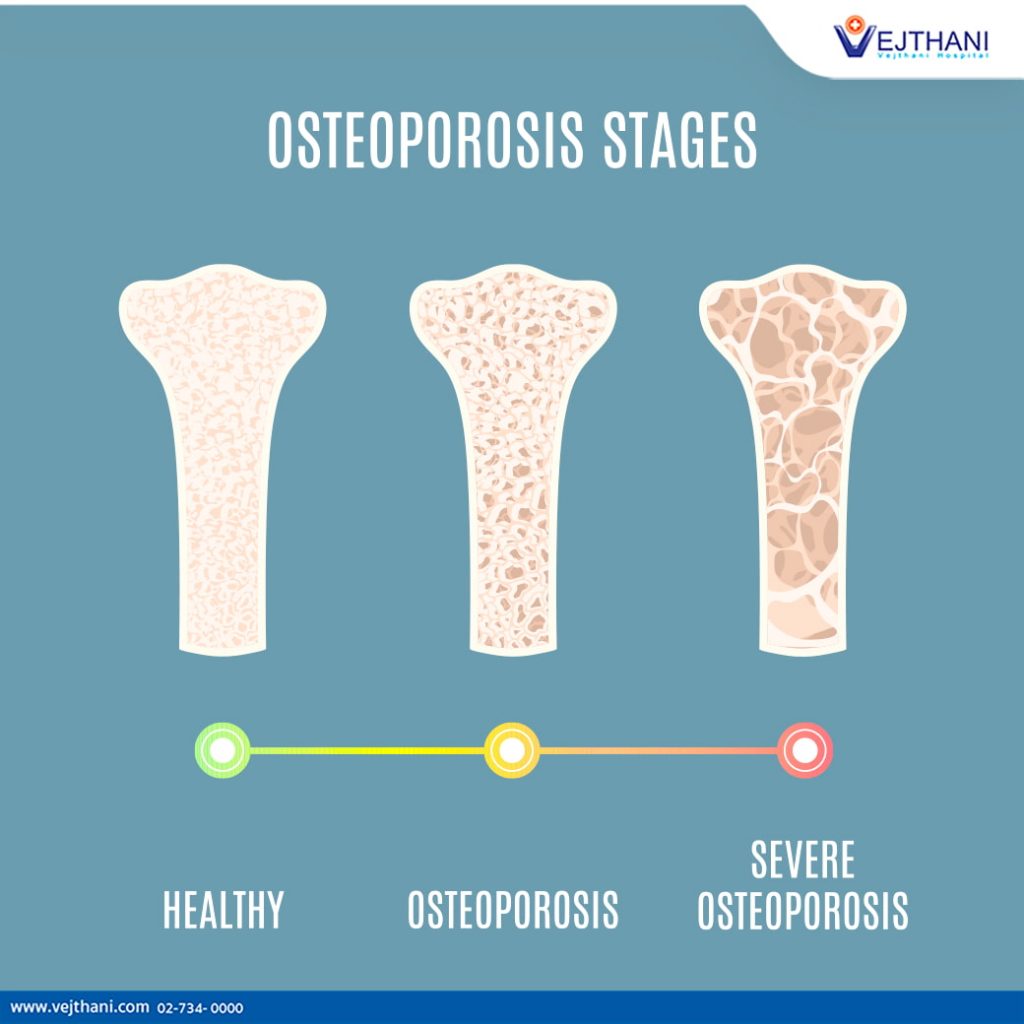Plantar Fasciitis Explained: Causes, Symptoms, And Recovery
Learn what plantar fasciitis is, its causes, symptoms, and the best treatment options available at Vejthani International Hospital in Bangkok.

Osteoporosis is a condition that occurs when a person experiences significant loss of bone density due to deterioration of bone tissue. This causes bones to become fragile and more prone to fractures. Osteoporosis is a major public health threat for more than half of the population over 50.
The most common injuries in people with osteoporosis are broken wrists, broken hips, and broken spinal cord. However, fractures may also occur in other bones such as the arms, shoulders or pelvis. In more severe cases, a cough or sneeze can cause a broken rib or a broken vertebra. Osteoporosis is normally not painful until a bone is broken, however broken bones in the spine can be a long-term cause of pain. There are a variety of methods and tests used to diagnose and treat osteoporosis.
In order to diagnose osteoporosis and assess the risk of bone breakage, as well as determine the type of treatment needed, doctors will most likely order a bone density scan. This scan is used to measure bone mineral density. It is commonly performed using dual-energy x-ray absorptiometry (DXA). Tissues and bone absorb a certain amount of x-rays and this amount is measured by the DXA machine which is correlated to bone mineral density.
The DXA machine converts bone density information into T – score and – Z score. The T- score measures the amount of bone you have compared to a population of younger people (age 30 years old). This T- score is used to estimate the risk of developing a fracture as well as if there is a need for drug therapy.T- score, > -1 represents a normal score with no osteoporosis while < -2.5 represents a higher risk of osteoporosis. Z- score is a measurement of how much bone you have compared to those within the same age and sex group.
Other procedures may also be performed to determine if bone fractures have occurred due to osteoporosis.
A bone x-ray produces images of bones within the body. This procedure aids in the diagnosis of fractured bones, which may be caused by osteoporosis.
Another procedure which may be performed to check for fractures is a CT scan of the spine. This can also be used to measure bone density and determine whether fractures in the vertebrae are likely to occur.
Magnetic resonance imaging may also be performed to evaluate vertebral fractures for any evidence of an underlying disease, as well as to determine the age of the fracture. More recent fractures usually respond better to treatment.
To determine the risk of injury, doctors have developed a tool known as the Fracture Risk Assessment Tool, or FRAX. This helps estimate your risk of having a hip or other major fracture in the next 10 years. FRAX is normally administered by a health care provider, and it involves answering several questions about your lifestyle habits such as alcohol intake and other disorders that may be linked to osteoporosis.
As this information is filled in, the tool calculates your FRAX scores. Knowing your 10-year risk for fractures is important since it allows you to make more informed decisions about your treatment. With a FRAX score of 3% or more for hip fractures, or 20% for other major osteoporosis fractures, you may be at increased risk of fractures.
Osteoporosis is a relatively common disease in the older population, which is why it’s highly important to be screened and diagnosed if you are showing any symptoms. If you or a loved one is showing any signs or symptoms of osteoporosis, visit Vejthani Hospital and take a diagnostic test to find out how to keep your bones healthy and strong.
Orthopedics Center, 2nd Floor, King of Bones Building, Vejthani Hospital
Call +66 (0) 2734-0000 ext. 2298,2299
+66(0)85-223-8888 (English Hotline)